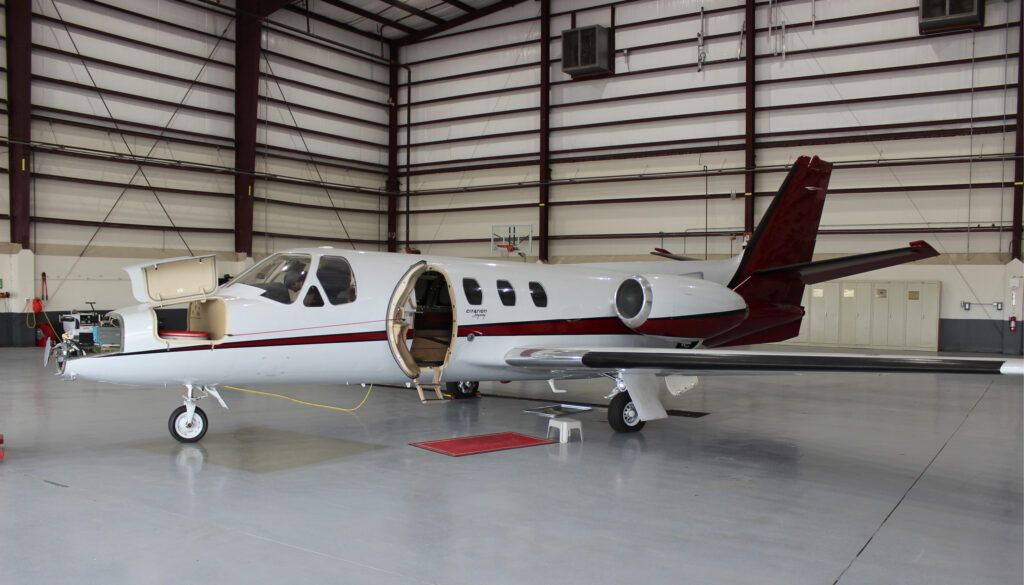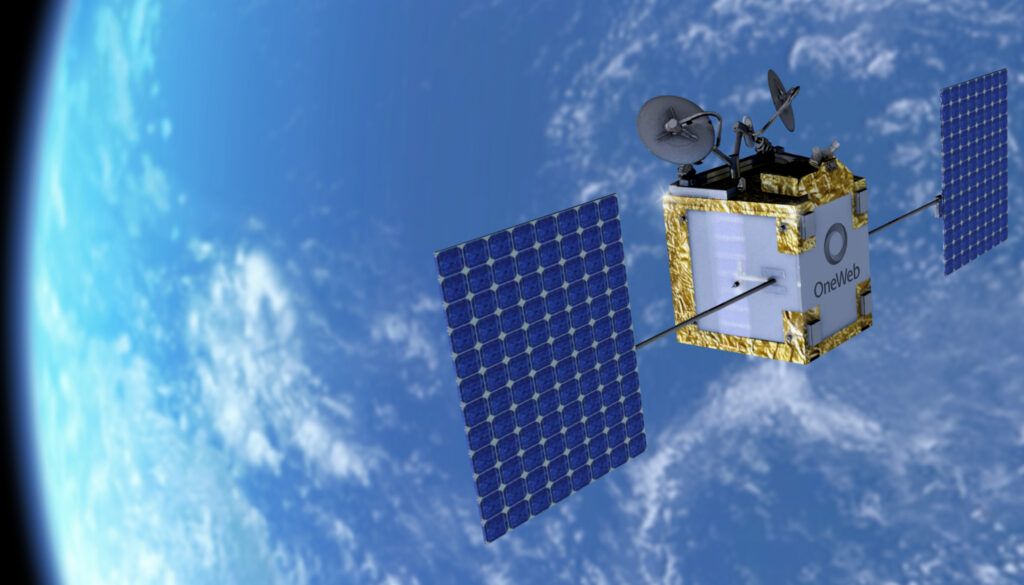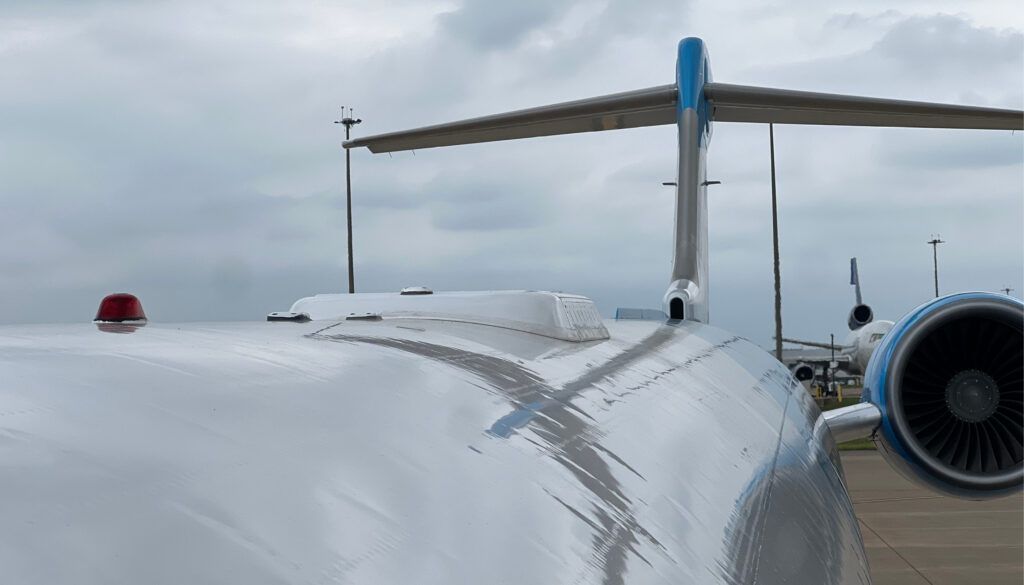It’s an exciting time for business aviation connectivity – with various new developments nearing service introduction.
New electronically steered antenna
Following approval of the first SD Plane Simple Ka-band STC in May 2024, Satcom Direct (SD) is now focusing on qualifying the third antenna in its Plane Simple series – the compact, fuselage-mounted, electronically steered antenna (ESA). The terminal is being validated on a Cessna CJ3 to test the consistency of data transmission, connectivity to the satellite network and its performance during all phases of flight.
The SD Plane Simple ESA is based on modular architecture and is purpose-designed to optimise LEO networks. The flat panel format is designed to optimise the benefits of phased array engineering, which steers the beam electronically towards the satellite constellation without moving parts. SD says that traditional phased array antennas used by commercial airlines connect with geostationary satellites some 23,000 miles (37,015km) away. SD contends that connecting with the Eutelsat OneWeb constellation – which is around 746 miles (1,200km) away – the antenna can have a smaller format, reducing power needs and subsequent heat generation, making them suitable for smaller airframes. The SD ESA has been designed to preserve the integrity of the antenna installation, minimising the need for invasive upgrades. Most updates will happen in the SD Modem Unit rather than on the antenna. “With no moving parts, maintenance costs are reduced, upgrades are seamless, and we’ve created cost-effective pricing plans that are attractive for all airframe categories,” says Michael Skou Christensen, CCO of SD.
The SD Plane Simple ESA terminal is on track to come online in Q1 2025. “Its full duplex performance will unlock the maximum global potential of the Eutelsat OneWeb network,” says Skou Christensen. “The design allows data to be sent and received simultaneously to increase data transmission efficiency and reduce latency to deliver high-speed broadband connectivity to more airframe sizes than ever before. Operators of Embraer Phenom, Cessna Citation and Cessna Grand Caravan-size airframes can optimise broadband services for the very first time, while mid- to large-size airframes will benefit from operating ESA and tail-mount antennas simultaneously. The dual-dissimilar capabilities increase redundancy and deliver consistent connectivity and uninterrupted coverage at high latitudes beyond the current reach of the GEOs to support productivity, entertainment and relaxation.”

LEO launch imminent
Eutelsat OneWeb, a GEO-LEO integrated satellite group, is on track to launch its LEO space-based inflight connectivity solutions for business aviation later this year. In recent months the company has completed the constellation of 634 satellites and the deployment of its ground infrastructure ahead of commercial launch.
Working with distribution partners Satcom Direct and Gogo Business Aviation, Eutelsat OneWeb is leveraging its expertise in business aviation connectivity to deliver a connected ecosystem – including hardware, software, cabin integration, aftermarket support, user management applications and tools.
Eutelsat OneWeb expects the network-capable business aviation terminals to be flying later this year, ahead of certification, installation and commercial operation. With a range of terminals to suit all manner of business aircraft, from light jets to bizliners, Eutelsat OneWeb is confident of delivering on the promise of a seamless, reliable and consistent online experience in the sky, backed by service level agreements.
Through its distribution partners, the company has commitments from a large charter fleet operator to upgrade the connectivity on its fleet of aircraft to include the LEO solution, as well as bizliner customers to be announced soon.
“This is a very exciting year for Eutelsat OneWeb, and a milestone year for inflight connectivity,” says Jason Sperry, head of business aviation at the company. “A business jet is first and foremost a business tool. Passengers now expect to remain connected through their devices, all the time. Executives will now be connected, entertained and productive like never before – able to work, stream, trade and conference, as they choose, whenever and wherever they fly.”

Ka- and L-band developments
Viasat’s Ka-band and L-band inflight connectivity services are currently on board more than 5,000 business jets across the world, and the company has various technology developments in the pipeline.
Viasat says its Jet ConneX customers will benefit from the introduction of upcoming Ka-band satellite payloads and three next-generation terminals. These include Satcom Direct’s Plane Simple Ka, which has been issued with its first STCs and is expected to enter commercial service in the coming months. Another of the terminals is Orbit’s AirTRx-30, which has succeeded in recent testing and is expected to enter service later this year. The third terminal is Honeywell’s JetWaveX, which will be the first to provide access to Viasat’s full Ka-band network including its GX and ViaSat-3 satellites. Viasat says these developments will deliver secure, uncompromised access to the digital world, including data-hungry applications such as video calls, live TV and HD streaming, VPN and large file transfer, and generative AI.
On the L-band side, Viasat’s SwiftJet inflight connectivity service will enter commercial service later this year. It is designed to deliver seamless global coverage across flight routes and up to six times the performance of the existing SwiftBroadband L-band business aviation solution. Viasat reports that flight tests have already been a success for the narrowband connectivity solution, and it will “unlock previously unachievable capabilities worldwide”. SwiftJet enables passengers to communicate over email, text, instant messaging and video calls, browse the internet and social media, and enjoy single device streaming.

Multi-network antenna
Since its introduction in 2023, Stellar Blu’s multi-orbit Sidewinder aviation terminal has been a popular choice for commercial aircraft in the USA, and is now available for midsize and larger business jets.
Sidewinder’s bandwidth speeds support full high-definition streaming, video conferencing and collaborative computing. The electronically steered, fuselage-mounted antenna is designed to be maintenance-free and provide a low profile, and therefore minimised drag.
Stellar Blu says Sidewinder offers resilient and redundant connections pairing OneWeb LEO service with various GEO networks to achieve global coverage, even at highly congested airports.
Satcom Direct provides LEO-only or multi-orbit services, as well as technical support globally. Sidewinder is designated as standard equipment on all BBJ 737 Select and ACJTwoTwenty aircraft, and is certified for installation on Bombardier Challenger/Global and Embraer Legacy models.
Stellar Blu says that by 2026, its installation base will approach 1,000 aircraft and dozens of STCs.
Sidewinder hardware and accompanying services are offered through a variety of industry partners, including Aloft AeroArchitects, Comlux Aviation, FargoJet Center, Lufthansa Technik and others.

Connecting all aircraft sizes
Gogo is making progress with its new Gogo Galileo global satellite-based system, which it expects to launch later this year.
The Gogo Galileo HDX terminal is small and light enough to fit on virtually any size business aircraft, from light jets and turboprops up to the largest business jets. “For midsize and smaller aircraft that operate outside North America, the ability to have fast, broadband inflight wi-fi on board with speeds up to 60Mbps has never before been an option and the HDX will provide that capability for the first time,” says Mark Sander, SVP of sales for Gogo.
“The interest we’re receiving from the market ranges from single aircraft operators all the way to global large fleet operators, as well as VVIP – it’s literally from every range of aircraft,” says Sander. “That speaks to our product line, and our go-to-market strategy of serving the smallest aircraft operator to the largest.”
Gogo has a singular focus on business aviation. It also offers the Avance hardware and software product line. The company has built the Gogo Galileo system to withstand the rigours of business aircraft operation and anyone already with an Avance system on board can add the global service through the addition of a single fuselage-mounted antenna.
“It’s evident that customers are looking for a global connectivity company that understands the business aviation landscape – where aircraft fly and how they use their aircraft,” says Sander. “They also want a company that understands how to provide the level of customer support they demand. The market is very confusing right now and we’re trying to simplify it.”

This feature was written by Izzy Kington and first published in the September/October 2024 edition of Business Jet Interiors International. Click here for the full version.





